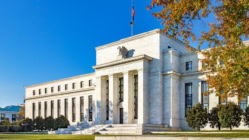
INFLATION ON THE HORIZON
Major inflation seems all but inevitable in light of our burgeoning supply chain issues, massive government spending, enormous money supply infusions (printing), climbing CPI numbers, and skyrocketing PPI numbers.
Because of this, I want to remind everyone why real estate is one of the best inflation hedges available.
By “inflation hedge” I mean finding an investment that will protect an investor’s wealth from being depleted by inflation.
For example, if inflation runs at 10% and a person’s entire net worth is in savings, he would literally be 10% poorer every year in terms of purchasing power.
To avoid that, investors need to find investments that will not only grow with inflation but actually do better than inflation.
And real estate fits that bill.
REAL ESTATE AS AN INFLATION HEDGE
- HARD ASSET. As a hard asset, real estate typically appreciates with inflation like we saw in the 1970s. This might not happen in lockstep, but it usually does over time. Hence, if inflation runs at 10% over the course of a year, a $1 million home will likely be worth $1.1 million at the end of the year.
- LEVERAGE. If a borrower puts down 20% on a $1 million home, and that home appreciates 10%, she will make $100,000 against her $200,000 investment. This is a great example of how leverage (debt financing) can work. The buyer gets to enjoy the appreciation from the entire $1 million home, even though she only has $200,000 in it. That is a 50% return against her $200,000 down payment.
- PAYING OFF DEBT WITH LESS VALUABLE DOLLARS. This is a huge benefit of inflation if borrowers have fixed-rate debt (and it is why I explained that 30-year fixed-rate loans can actually be considered “assets” in this blog: Inflation Makes Mortgage an Asset). If inflation runs at 5% and a borrower’s mortgage is at 3%, the lender is effectively PAYING the borrower 2% to borrow money. Put another way, debtors get to pay off their mortgages with much less valuable dollars, as their incomes climb with inflation. This again is what happened in the 1970s, as millions of homeowners were able to pay off their low-rate 1960s mortgages with much less valuable 1970s-post-inflation dollars.
- RENTS/CASH FLOW INCREASES. And last but not least – rents go up with inflation while fixed-rate mortgage payments stay the same. Hence, cash flow continues to improve throughout the inflationary cycle.
All of this was discussed at length in this “18 minute” (at 2x speed 😊) YouTube Segment with real estate guru Ken McElroy and wealth advisor Keith Weinhold.
Weinhold is almost gleeful about the prospect of inflation because real estate investors can do so well in such environments, and it is comical to watch.
Jay Voorhees
Founder/Broker | JVM Lending
(855) 855-4491 | DRE# 1197176, NMLS# 310167
























